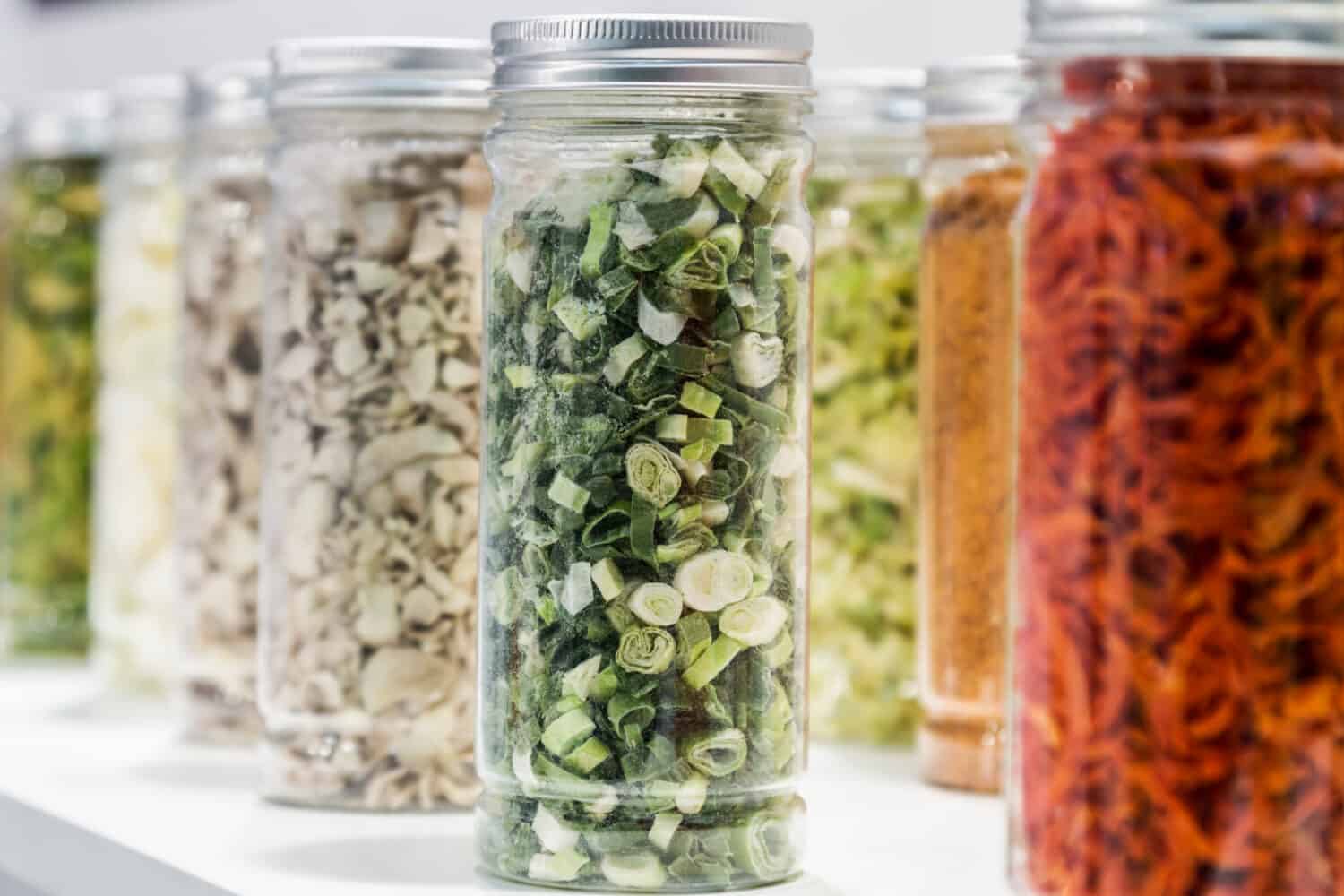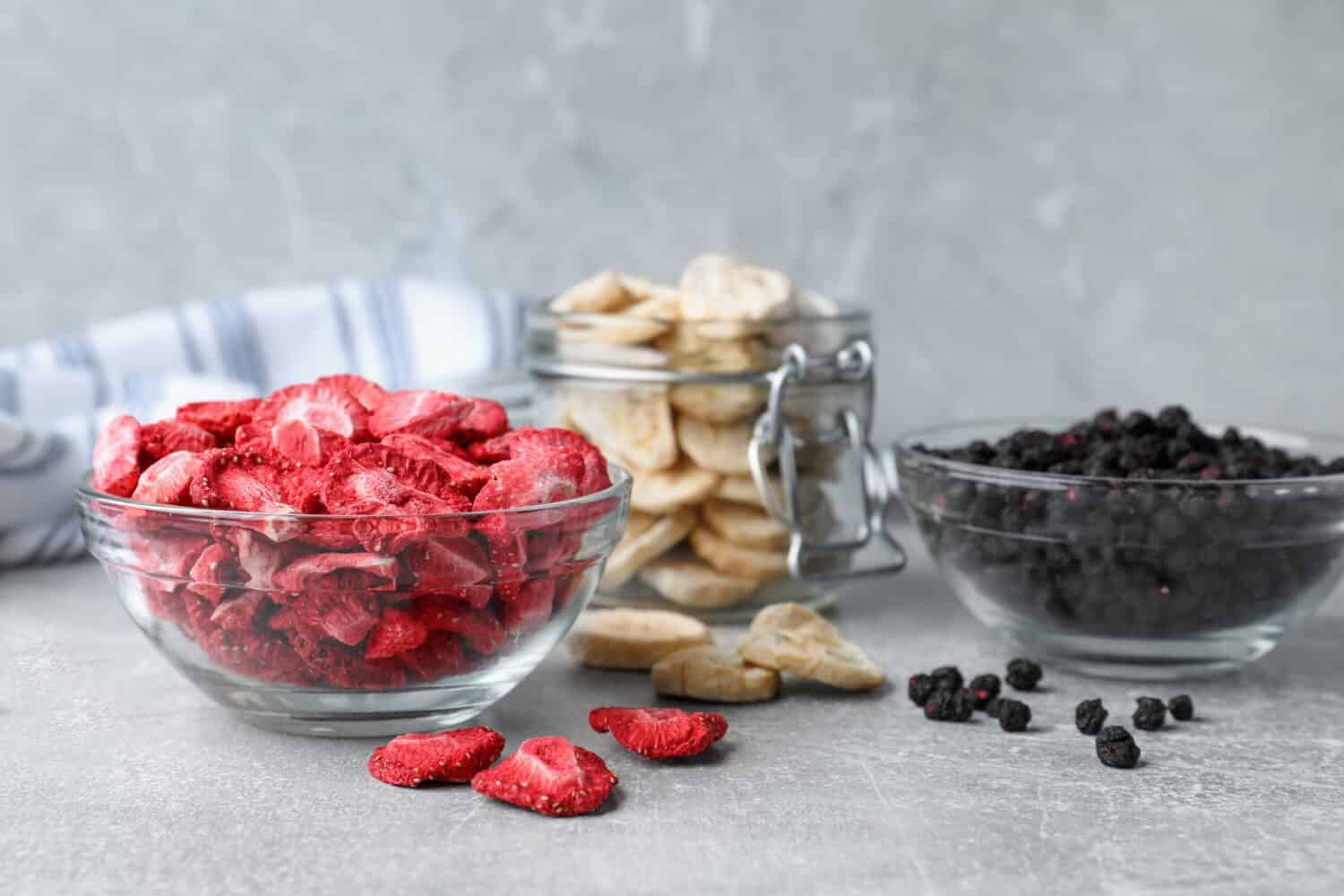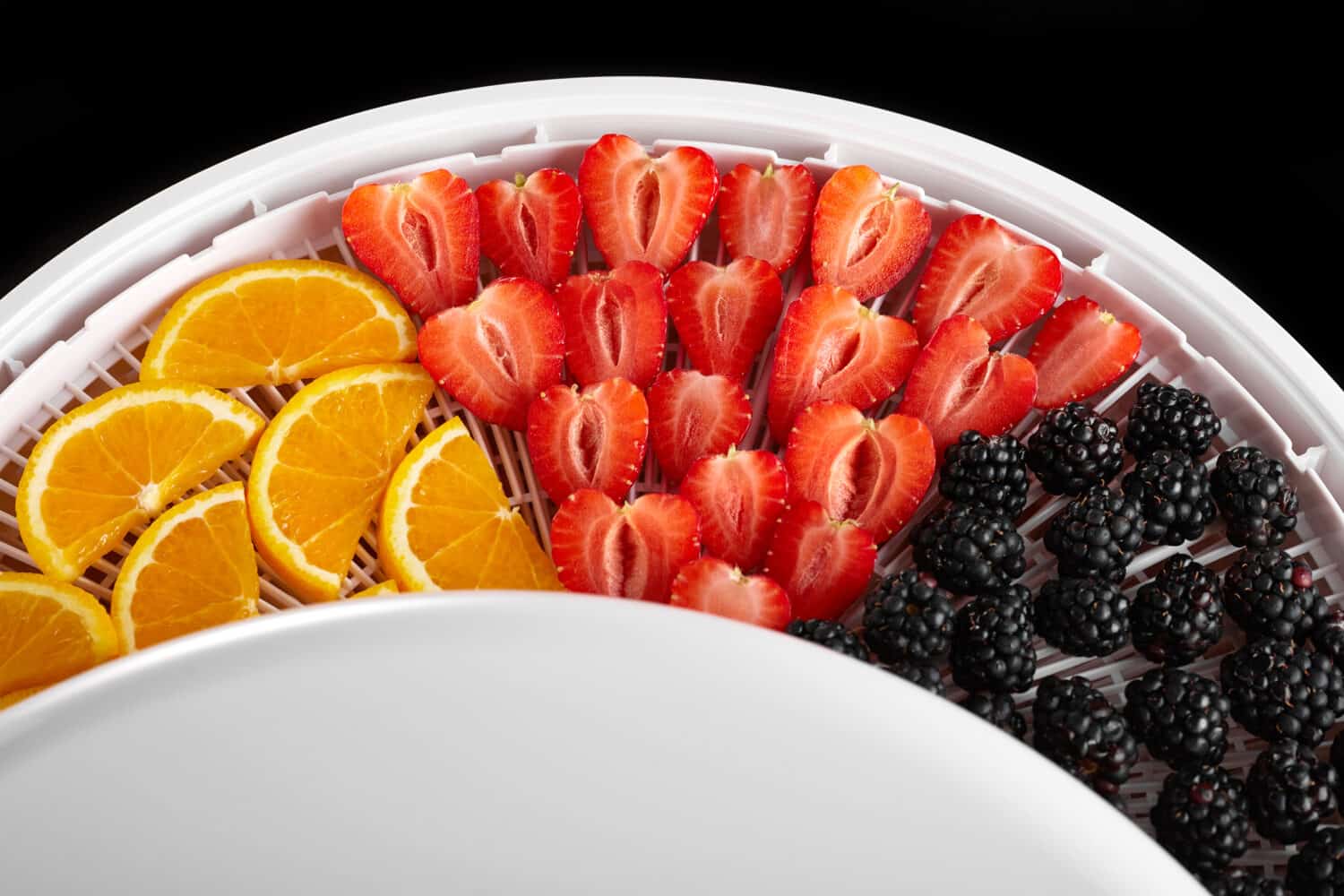There are two common ways of preserving food: freeze-drying and dehydrating. But what are the advantages and disadvantages of each method? We will examine the pros and cons of both preservation methods to help you determine the best way to store food for your household. Additionally, we will consider the nutritional value, cost, and ease of use of each technique.
Freeze Dryer vs. Dehydrator: What is Freeze-Drying?
Freeze drying, sometimes called “lyophilization,” preserves food in a two-step process. A freeze dryer quickly freezes the food at a low temperature and then gradually reduces the pressure in the storage chamber. A vacuum causes sublimation, the process that turns the ice from frozen food into gas, thereby preserving the food's original size, shape, and texture.
Fruits and vegetables are the best foods to freeze dry. If you freeze dry dairy, eggs, or meat, make sure you cook them before eating them because the freeze-drying process does not kill bacteria. While freeze drying is great for preserving most foods, foods containing a lot of fat, sugar, or alcohol do not last as long. Additionally, foods containing large bones generally do not freeze dry well.
Freeze Dryer vs. Dehydrator: How Does a Dehydrator Work?
Dehydrating food is a traditional method of preserving food items. A dehydrator works by circulating hot air and drawing out the liquid from the food at a temperature of around 115 degrees Fahrenheit. Unlike a freeze-dryer that quickly removes all the moisture from food, a food dehydrator gradually extracts moisture using heat. Dehydrating tends to remove more of the nutrients and taste from the food, which is why some people prefer to freeze-dry their food.

Just add water, and freeze-dried vegetables will rehydrate and return to the same texture, size, shape, and flavor as they were originally.
©OlegDoroshin/Shutterstock.com
Freeze Dryer vs. Dehydrator: Types of Foods That Can Be Dried
It is worth noting that certain foods are better suited for freeze-drying rather than dehydration. Liquids such as yogurt and milk cannot be dehydrated, but they can be freeze-dried and transformed into powdered milk or coffee. On the other hand, proteins are not ideal for freeze-drying since they can become overly tough and chewy. Additionally, dehydrating tends to shrink food and give it a chewier texture. While some may prefer this chewier texture, say when snacking on dehydrated fruit like apricots, others may dislike this aspect of dehydrating food.
Here is a breakdown of foods that can be freeze-dried vs. dehydrated.
| Freeze Dryer | Dehydrator | |
|---|---|---|
| Baked Goods | Yes | Some |
| Cooked Carbs (Rice & Pasta) | Yes | Yes |
| Cooked Meat | Yes | Yes |
| Cooked Vegetables | Yes | Yes |
| Eggs | Yes | No |
| Milk & Yogurt | Yes | No |
| Raw Meat | Yes | No |
| Peanut Butter & Butter | No | No |
| Sauces | Yes | Yes |
| Smoothies & Juices | Yes | No |
Freeze Dryer vs. Dehydrator: The Benefits of Each
Both methods of food preservation effectively store food for an extended period. However, freeze-drying is particularly beneficial for preserving the nutrients and flavor of fruits and vegetables. Furthermore, freeze-drying does not usually alter the food's weight, texture, or color. In fact, freeze-drying food preserves up to ninety-seven percent of its original nutrients. Additionally, freeze-dried food can have a shelf life of almost twenty-five years without the need for additional preservatives. Freeze-drying ensures that food has the longest possible shelf life while maintaining its quality and nutritional content.
On the other hand, dehydration is also a good method for preserving fruit, herbs, and vegetables. Unlike freeze-drying, though, dehydration does not remove all of the water from food. Dehydrated food does not last as long as freeze-dried foods. Additionally, dehydrating food causes a process called oxidation, a breakdown of the nutrients the food contains. Moreover, if dehydrated food is not properly stored, enzymes and bacteria will compromise the food. As a result, dehydrated food has fewer nutrients and a shorter shelf life than freeze-dried foods.
Freeze Dryer vs. Dehydrator: Cost
Dehydrators are a more affordable option compared to freeze-dryers, with a standard dehydrator costing between $100 to $300. If you opt for a larger, more industrial model, you may pay as much as $1,000. On the other hand, freeze-dryers are significantly more expensive. Basic freeze dryers cost anywhere from $2,000 to 5,000 dollars, and they can run as high as $40,000.
However, while they are more expensive up front, freeze dryers preserve food better and provide a much longer shelf life. In terms of operational costs, freeze dryers consume more electricity than dehydrators, using approximately 1.5 kilowatts per hour. Freeze-drying usually takes a full day, while dehydration takes half that time. Despite its higher upfront cost, freeze-drying may offer better long-term benefits in terms of nutritional value and shelf life compared to dehydrators, even accounting for long-term expenses.

Freeze dryers are more expensive, but freeze-dried food has a longer shelf life and tends to taste better.
©New Africa/Shutterstock.com
Final Thoughts
When it comes to preserving food, there are different options to consider. Freeze drying is an excellent method that helps to keep the nutritional value, flavor, and texture of food intact. However, the equipment for this process can be expensive, ranging from $2,000 to $5,000. On the other hand, dehydrating is a more affordable option, with dehydrators typically costing between $50 and $300. However, the quality of the preserved food may be better than that of freeze-dried food.
When trying to decide between the two, think about your budget. Do you want to spend less money up front, or are you willing to pay more in the long term for something that might be more cost-effective in the end? Second, consider the nutritional value. Do you want something that will preserve more of the nutrients and vitamins, or is this less of a concern for you? Finally, think about the taste of the food. Dehydrating may affect the flavor of the food, so if you want to keep the flavor, freeze-drying may be the better option. Considering all of these factors will help you make a more informed decision about the best way to preserve food for your family.
The image featured at the top of this post is ©Serhii Perepelytsia/Shutterstock.com
